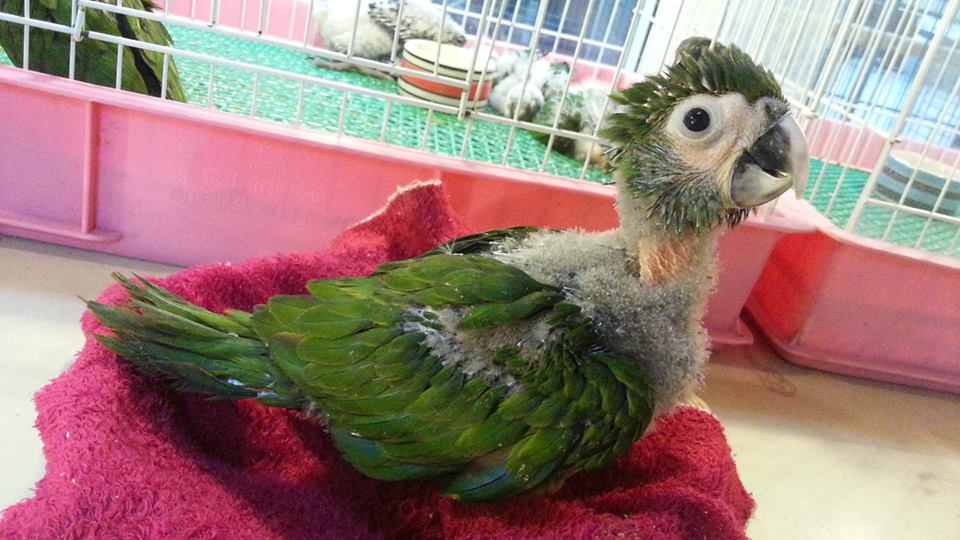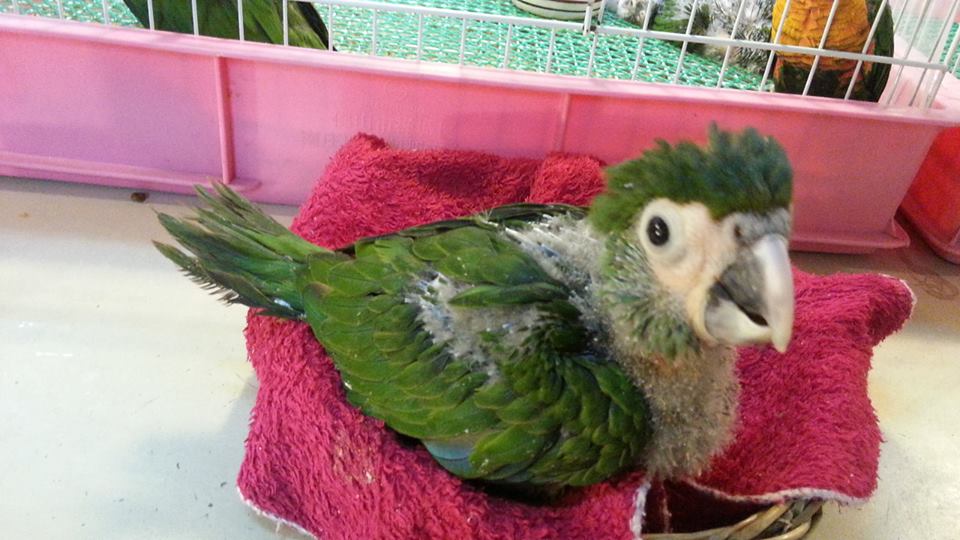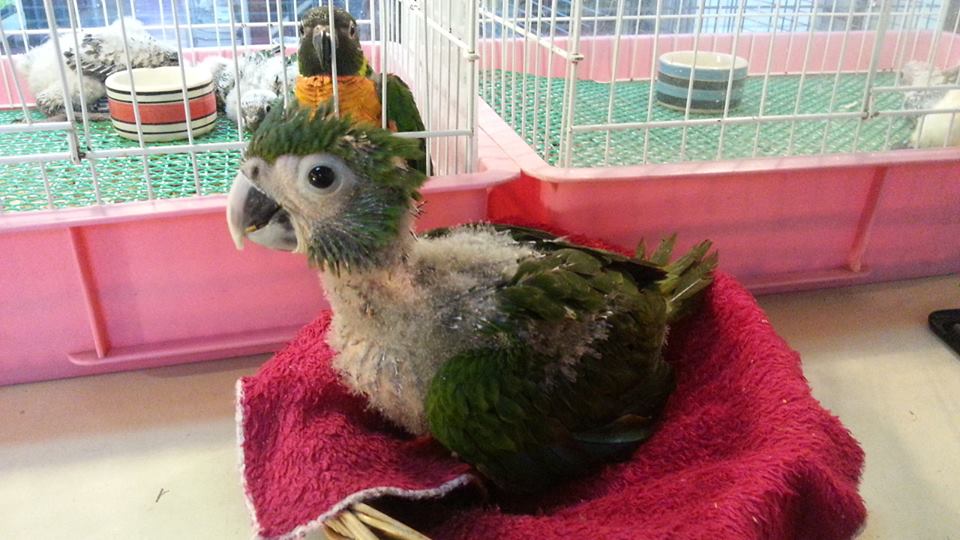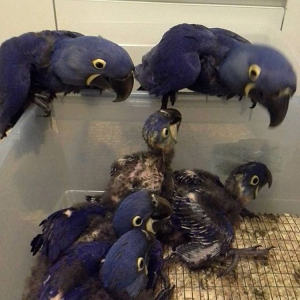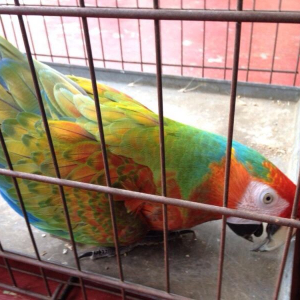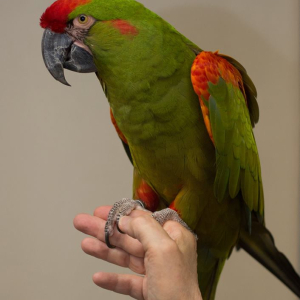Description
The red bellied macaw, also known as Guacamaya Manilata, is a medium-sized, green macaw. It is the largest of what are commonly called “mini-macaws”, some other mini macaws we have at our store include Hahn’s Macaws and Severe Macaws. The belly has a large maroon patch which gives the species its name. Red Bellied macaws are one of the most difficult parrots to breed in captivity due to their lack of ability to adapt to captive conditions.
If you’d like to have a mini macaw for a pet, you should know that the only small thing about these birds is their size. Personality bubbles out of these birds, so potential owners need the right stuff to be able to keep up with the little guys. Mini macaws need lots of interaction from their owner along with plenty of toys and an abundance of space. These intelligent parrots easily bond with their owner and can be depended upon to eventually mimic what you say and movements you make. Plus they usually live quite a long time for a bird, with a lifespan of 20 to 30 years, so that’s a significant commitment. Find out all you need to know about mini macaws—the species, how to care for them, and what it takes to be a good mini macaw owner
Caring for the Red Bellied Macaw
Taking care of these birds is somewhat tricky. In many cases, they are easily stressed and do not adapt to captivity well. Many birds don’t live more than a few months or years. Therefore, we have little information about their long-term care.
Most people don’t own the birds long enough to get a good idea of their care needs.
Your best bet to keeping one of these Macaws alive is to mirror their natural environment as much as possible. This means ensuring that they are in a large aviary that they can fly around in. You should preferably have a covered area in which they can roost, since they use dead trees in the wild.
Companionship is a must for these birds. They often live in large family groups, with five to 10 birds sleeping together every night.
Do contact us for any more information.

